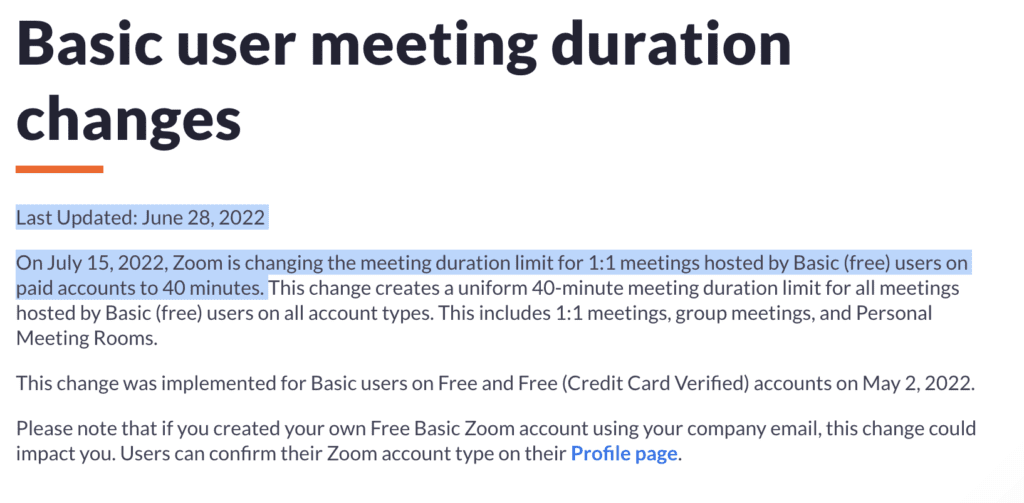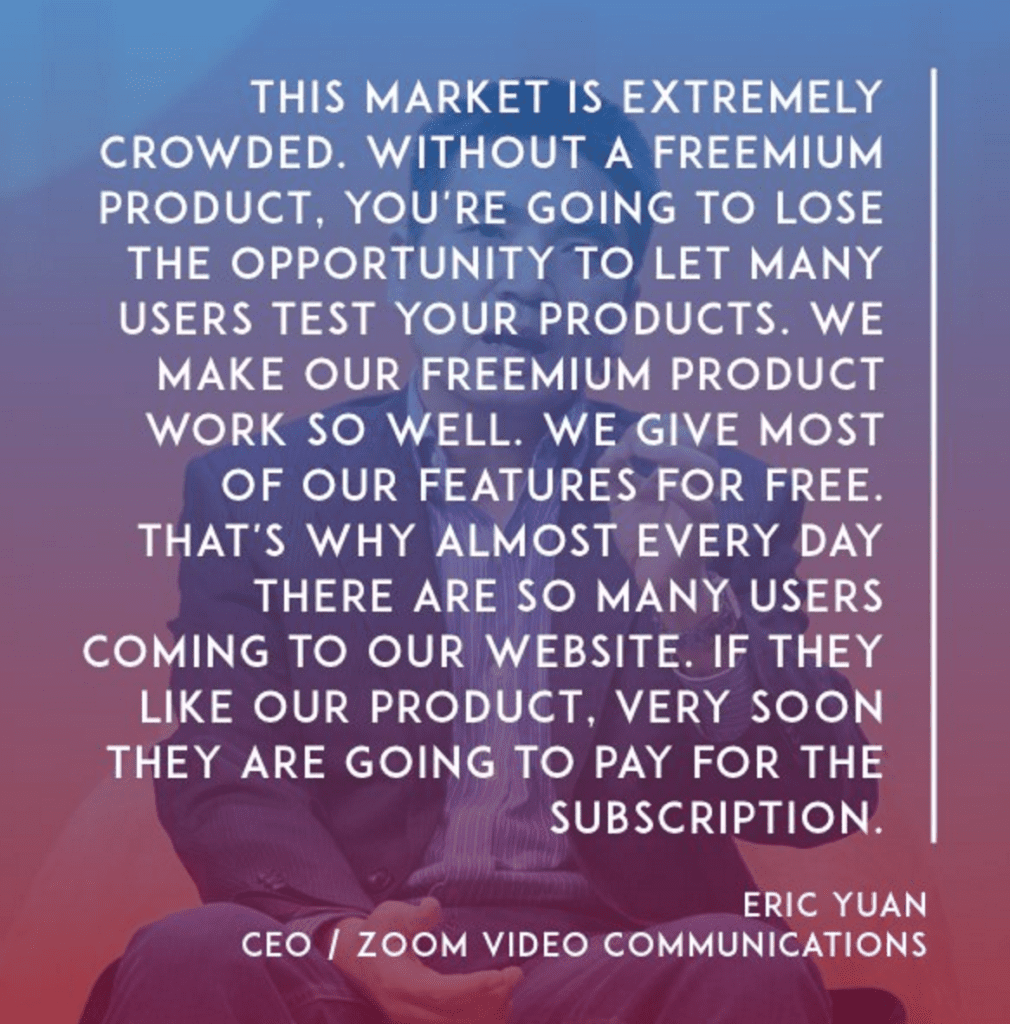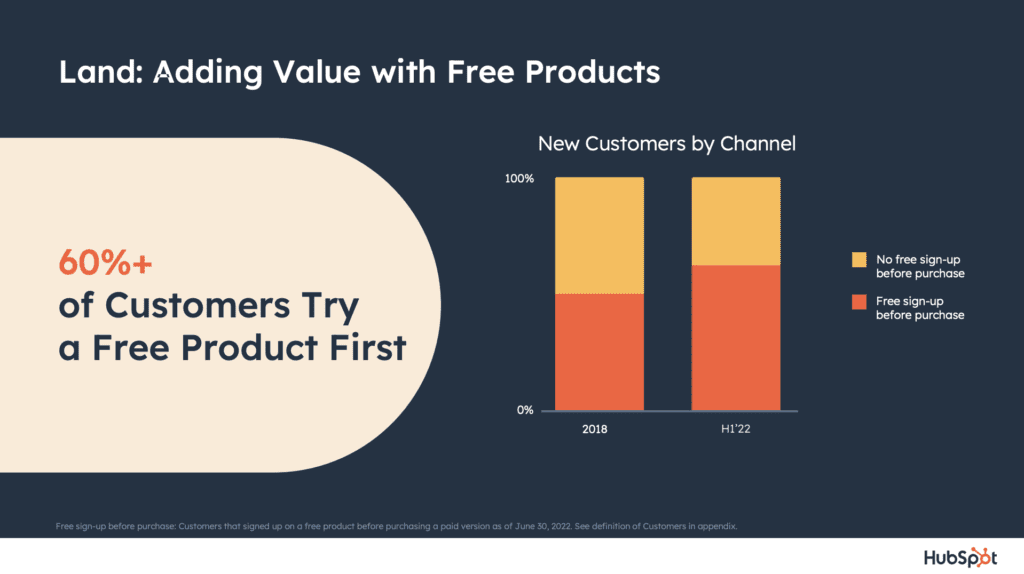Zoom’s growth has slowed of late, not because it’s not an amazing app. But because as we returned to the new normal world, SMB sales finally came under pressure. So in 2022, finally, at $4B+ in ARR … the Free edition became a bit less free:
But only at massive scale. Only at $4B+ ARR did Zoom cut back its Free edition. And even so, it’s still 40 minutes free for everyone.
I remember when Aaron Levie and Karen Appelton, his ex-head of partnerships, came to the SaaStrAnnual.com to talk partnerships, and one point on “free” deeply resonated with me. Aaron said he wished his API could be 100% free for everyone, for everything. He said he lamented that the reality was that wasn’t practical for Box’s current business — but he wished it could be:
What did he mean? What he meant was he knew that to win, to go big, to be ubiquitous … you want everyone and every partner using your web service. Everyone. That’s the best way for your brand to win, at least if you have a broad-based product like Box (or Adobe Sign or Slack or Zoom). To get it into the hands of everyone. To deploy it. To integrate it. To tell their friends. To recommend it.
And yet, for most of you, making a big portion of your product free will create tensions:
- The sales team often hates free. Best case, it gums up their sales process and confuses it. How do you sell a $250,000 edition when folks can also use the Free one? It also can create a ton of leads that sales can’t close.
- The marketing team often wants to limit free. If marketing has a revenue goal from self-service (and hopefully they do), they’ll often want to increase the “choke”. I.e., limit how much the free product can be used, or how long. Often to the point of really crippling the long-term benefits of a free edition. Everything is about “free-to-paid conversions” in marketing.
- The support team almost always hates free. They pay nothing but overwhelm your support channels.
- The ops team sees free just as a cost center. Unless you are a 100% freemium play, if free is just a segment, the “business folks” and ops folks will just see them as a cost center, to be managed down.
- Your investors might not really get “free”. The pressure to hit the plan will often have them suggesting to you to figure out how to monetize those free users … now.
And in the short-term, all these folks are right. If you tighten the “choke” on free, then this quarter, your paid revenue will go up. And if you limit the type of folks in your free plan, your lead-driven sales revenue will likely go up, too. They are all right in the short-term.
But let’s not only listen to Aaron, but now, Zoom and Slack have IPO’d. Let’s listen to those decacorns:
- Zoom and Slack aren’t just niche applications like some of their predecessors. They are ubiquitous. And they have far more market share and mind share than their predecessors. Some of this is just growth in the Cloud.
- And Zoom and Slack are very, very free. Almost too free. Not only are the first 40+ minutes of Zoom completely free, forever … but if you go over, until very recently, they let you keep going! And while the paid versions of Slack are extremely powerful for search, etc. … you can easily run a 100+ org on Free Slack forever, including, as far as I can tell, as many integrations as you’d ever need. Team SaaStr ran on the Free Slack version for years until finally moving to paid earlier this year.
- In fact, Zoom and Slack are so free that there are tons of free riders. And yet these are the 2 great rocketships in SaaS of the current generation.
- Even at $2B in ARR — 55% of Zoom’s customers started with the free version. That’s stunning. More here.
The CEOs of Zoom and Slack went long. Very long. They didn’t try to maximize free-to-paid conversions. They wanted everyone, everywhere, loving their products. There is absolutely no reason not to at least give Zoom or Slack a shot.
At least until recently. Zoom in 2022 cut back its free edition — but that wasn’t until $4B in ARR! And Slack only raised prices (a related point) for the first time in 2022 as well, at $1.5B+ in revenue. They really waited.
And it worked.
And look at HubSpot. They are actually seeing better performance from their Freemium as they approach $2B in ARR than they did before:
Now, 60% of HubSpot’s customers try a Free product first. Even as HubSpot goes a bit more upmarket, and drives ACVs up a bit.
How about you? Do you want everyone using your product 3-10 years out?
Or do you want a few more paying you for it this quarter?
I vote for the former. Go Long.
A bit more here:
(note: an updated post on topic)





